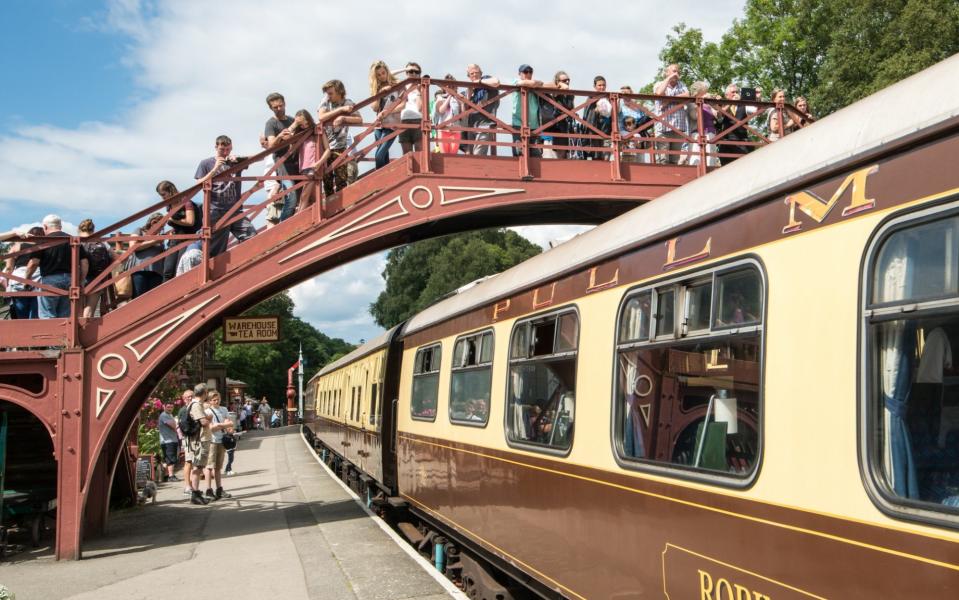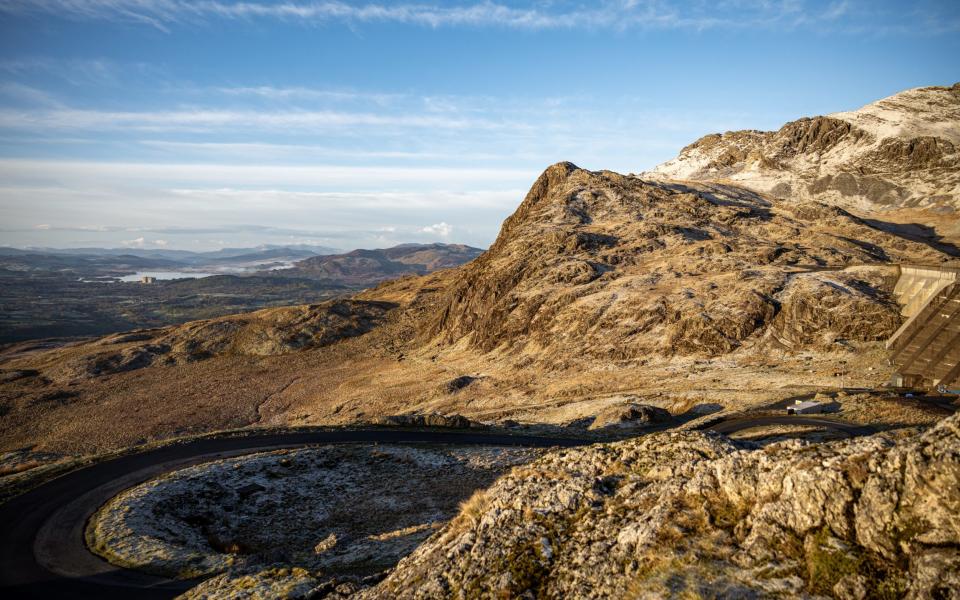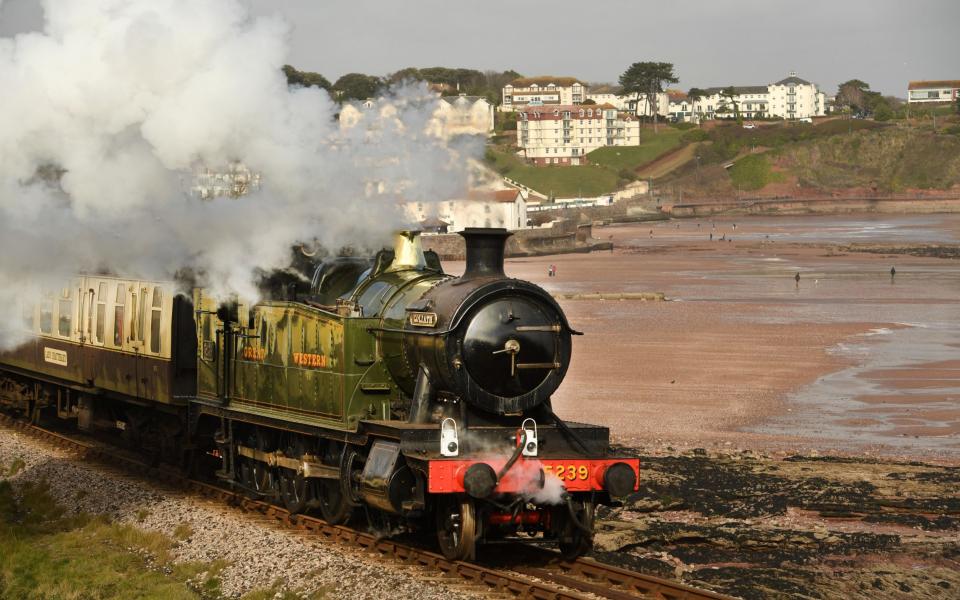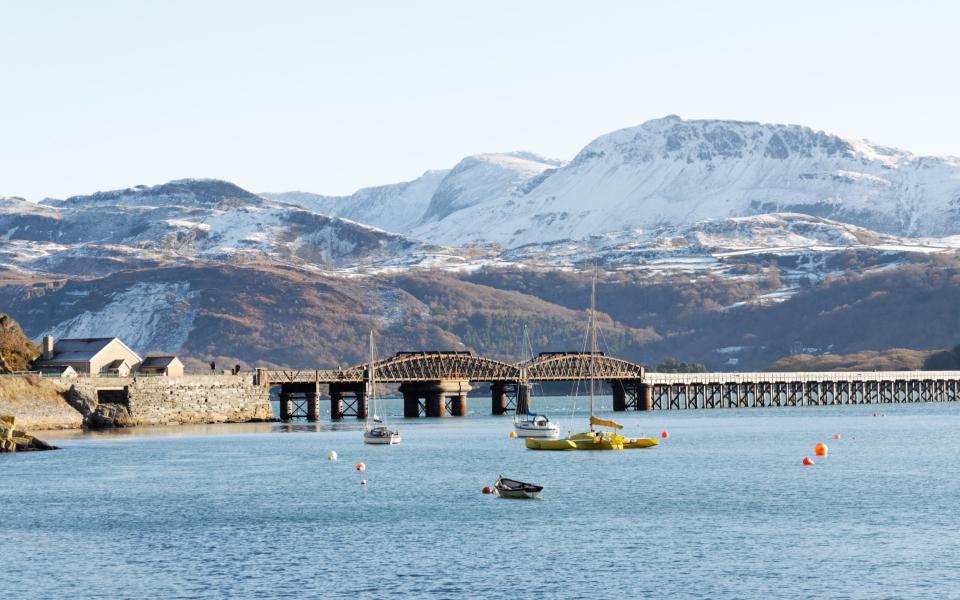There is no more relaxing mode of travel than rail, and no better way to enjoy the beauty and scenery of a country than through the window of a carriage, whatever the season. When it came to seeing landscapes, Robert Louis Stevenson thought “nothing is more vivid … than from a railway train”.
Britain has hundreds of attractive rural railway lines that offer scenic delights, and access to wonderful walks or picturesque villages and towns. It has more tourist railways than any other country per capita, attracting millions of passengers every year.
Royal Scotsman
The hotel on wheels has become a byword for luxury train travel. The cabins, all en suite, are generously proportioned for a train carriage, but it is the quality of the food and the perfect friendliness of the crew that make a trip on the Belmond Royal Scotsman a real pleasure.
The small galley kitchen produces refined dishes using local produce wherever possible, and there’s a good selection of malts for chatting in the car lounge before or after dinner. The various tours, from three to eight days, are designed to showcase the best scenery Scotland has to offer, some focusing on history, others on food and whisky. An open balcony on the rear coach helps photographers capture the views; Wellness lovers will appreciate the new Dior Spa on board, with two relaxing treatment cabins. In 2024 two Grand Suite cabins will also be added, featuring furniture and design inspired by the Highlands.
The details: From £4,400 per person for its Taste of the Highlands itinerary (0845 077 2222; belmond.com).
North Yorkshire Moors Railway
Britain’s busiest heritage railway runs through 24 miles of glorious countryside, much of it within the North York Countryside National Park. Using part of Network Rail, trains climb along the Esk Valley from the coast at Whitby to reach the North Yorkshire Moors Railway’s own tracks at Grosmont junction.
Engineered by George Stephenson himself, the railway crosses woodland to the moorland village of Goathland, still remembered as the setting for the TV series Heartbeat. Some passengers break the journey here to walk into the village or explore the famous mile-long stretch of road – Roman or even earlier – across Wheeldale Moor. Leaflets suggest walks from the other intermediate stations before the journey ends at the market town of Pickering and its 13th century castle.
The details: Daily services return on 23 March, with tickets for 2024 going on sale soon (01751 472508; nymr.co.uk).


The Jacobites
The West Highland Railway crosses some of the wildest country traversed by a British railway, connecting Glasgow with Fort William, although the extension to Malague is best known. The famous curved viaduct at Glenfinan (pictured top) has featured in four of the Harry Potter films, and the Jacobite steam trains that run to the fishing port from April to the end of October draw thousands to the area as because of its wonderful landscapes.
After catching a glimpse of the Caledonian Canal at Neptune’s Staircase – a flight of eight locks – the railway skirts Loch Iall and soon runs alongside the sea. Cattle can sometimes be seen on the white sands near Murchar and views across sea lochs to the Little Pig Islands, Eige and Rum. Inland there is a panorama of mountains dotted with sheep pound stones and the houses of the herders. The Caledonian Sleeper from London, some carriages with en-suite showers and even a double bed, is the most romantic and relaxing way to reach the Fort.
The details: The Jacobites runs from March 28 to Friday October 25, from £64 return (0844 850 4685; westcoastrailways.co.uk). Caledonian Sleeper, London to Fort William, from £405 for a double cabin (0330 060 0500; sleeper.scot).


Ffestiniog and Wales Gaeltacht Railways
These two narrow gauge railways terminate at a shared station in Porthmadog and weave through Snowdonia. The Welsh Highland Railway is within Caernarfon castle, and the Ffestiniog Railway to the slate quarrying town of Blaenau Ffestiniog.
The Ffestiniog Railway has many claims as to why it should go down in railway history – locomotive trials in 1870 attracted delegations from nine countries, including Russia and India – but the spectacular scenery the trains fill up. These leave Porthmadog across the narrow Mob with the sea on one side and a mountain polder on the other, before building to a unique spiral near the top.
The scenic highlight of the Welsh Highland Railway is the route through the Aberglaslyn Pass, although there is not a single minute in its 25 miles. The steep gradients of both lines require special steam engines. The Ffestiniog Railway offers an observation car and the Welsh Highland Railway has two Pullman cars, one with an observation end (each subject to a supplement).
The details: Welsh Highland Railways from £70 per person, return; Ffestiniog Rail from £50 per person, return. Services resume on 25 March (01766 516000; festrail.co.uk).


Dartmouth Steam Railway
West Country resorts were the destination of hundreds of train trips during the summer months when everyone went on a rail holiday. The Dartmouth Steam Railway was once the route of the Torbay Express and now makes a final connection with Network Rail before continuing south to a terminus at Kingswear.
The line climbs from Paignton to provide panoramic views over Torbay before crossing a saddle in the hills to descend along the Dart Estuary to Kingswear, passing Agatha Christie’s holiday home at Greenway, now in the care of the National Trust. Various ticket options allow you to make the return journey on a river cruise with a bus connection to complete the circuit between train and boat.
The details: return £21 (01803 555872; dartmouthrailriver.co.uk).


Blue Bells Railway
Southern trains to East Grinstead provide Londoners with easy access to Bluebell Railway whose station is a few minutes’ walk from the mainline platform. The 11-mile walk to Sheffield Park takes you through well-wooded Sussex countryside, with bluebells in spring.
Each of the four stations is restored to evoke a different period in the line’s 137-year history, and the quiet, rural Horsted Keynes junction, with its small refreshment room on the island platform, is one of the most atmospheric heritage railway stations of all. . Being the first standard heritage railway, which opened in 1960, the Blue Bell has a fine collection of vintage carriages, adding to the magic of the journey. Take a stroll to the National Trust gardens at Sheffield Park before returning.
The details: All-Day Rover Tickets for Adults from £25 (01825 720800; bluebell-railway.com).


Shrewsbury to Pwllheli/Aberystwyth
The railway serving the Cardigan Bay resorts between Aberystwyth in the south and Pwllheli in the north meanders through mid Wales and rolling hill landscapes devoted to livestock farming or woodland. The two lines diverge at secluded Dyfi Cyffordd (Black Junction), which is only accessible by footpath. The route leads south to the university town and an opportunity to take the Glenn Reidol narrow gauge railway to the famous waterfalls of the name.
On the edge of the cliffs above the sea, the northern line also links with narrow gauge railways – the Talyllyn Railway at Tywyn and the Ffestiniog and Highland Highland railways at Porthmadog. A highlight is the 1867 wooden bridge near the Berm that crosses the Mawddach Estuary, shared with cyclists and pedestrians.
The details: Shrewsbury to Pwllheli, from £27.10 return; Shrewsbury to Aberystwyth, from £24.80 return (0333 3211 202; tfw.wales).


Cumbrian Coast (Lancaster to Carlisle)
The fastest route between Lancaster and Carlisle is the main West Coast line over the top of Shap, but the slow travel route through Barrow and Whitehaven provides long stretches of rail near the treacherous sands of Morecambe Bay and the Irish Sea. The West Coast main line remains at Carnforth Station where Brief Encounter was filmed in 1945.
Long crossings carry the railway across the estuaries, and the landscapes are little interrupted by the mining, steel and shipbuilding industries that once dominated the Furness peninsula. Beyond the shooting range at Eskeals is the Green and the start of the delightful Ravenglass & Eskdale Railway, a 15 inch gauge line used by many walkers as a way to reach the western fells. Beyond Whitehaven, one of England’s first planned towns, the inland railway winds through pleasant farming country to reach the border city of Carlisle.
The details: From £26.50 return (0800 200 6060; northrailway.co.uk).